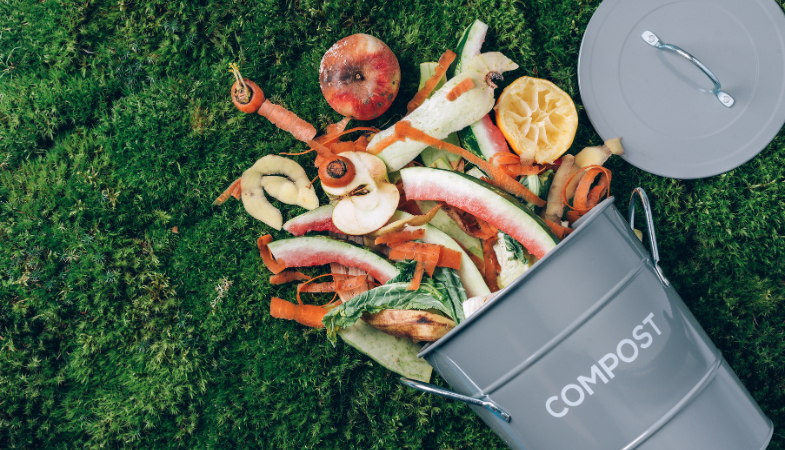
As many gardeners will attest, there is great joy in transforming your yard and kitchen waste into eco-friendly organic fertilizer that nourishes the earth. It is rewarding to recycle materials into compost that enriches the soil that keeps your veggies, plants, and flowers healthy. If you are a beginner, investing time and energy to learn about composting may seem daunting.
Composting is a natural process that uses aeration to regulate the breakdown of organic matter. It involves microorganisms utilizing carbon and nitrogen to develop and reproduce, water to digest materials, and oxygen to breathe as they feed on the materials added to the compost pile. The result is compost that is black, crumbly, earthy, and rich in nutrients.
Composting can turn food leftovers and yard trimmings into a beneficial soil amendment that helps the environment. We can preserve our soil and eliminate the need for chemical fertilizers for a more sustainable approach to gardening and landscaping. Here’s how to get started.
Select a Composting Method
There are three most common methods of composting. Determine the method that works best for your needs taking into account your available space.
Traditional composting entails gathering organic waste such as food scraps, yard waste, and other biodegradable items. The pile is then rotated and watered regularly to provide oxygen and moisture to the microorganisms that break down organic matter into compost.
Vermiculture uses worms to break down organic matter. The worms are placed in a container with bedding material such as shredded paper, leaves, and food leftovers. Worms eat food scraps and bedding, and their waste, known as castings, becomes a nutrient-rich soil amendment ideal for gardening.
Bokashi composting is fermenting organic waste in an airtight container with the help of microorganisms. A Bokashi starting culture, food scraps, and other organic materials are put in the container and sealed.
Set up Your Compost Space and Containers
First, identify an ideal space for your compost pile and choose the appropriate containers. Look for a spot in your yard near a water supply that has good drainage and is readily accessible all year round.
Wood: Wooden containers are durable and have aesthetic appeal. The open slats or holes allow good airflow. Wood provides insulation and regulates compost temperature. However, wood rots over time, which can damage its structural integrity and may need to be replaced.
Wire: Wire mesh containers provide excellent airflow promoting the breakdown of organic waste. But they may rust or corrode if kept outside in harsh weather conditions. Organic materials like leaves or tiny kitchen scraps can also fall through the open mesh construction.
Plastic: Plastic is lightweight, durable, low maintenance, and cheap. However, because it doesn’t provide good air circulation, it can slow the composting process. It is also susceptible to damage from UV rays, making it brittle over time.
Worm Bins: These are specialized containers created especially for vermiculture. They are usually made of plastic and have several layers the worms may pass through to better digest the organic waste.
Prepare and Maintain Your Organic Waste
Cutting and breaking up your organic waste before putting it into the compost pile is a good idea. Expanding the surface area enables microorganisms to access more of the material and speed up the composting process. Composting meat, dairy, and pet waste are not recommended, as these may attract pests and give off unpleasant odours.
It’s also critical to have a healthy mix of “browns” and “greens” in the compost pile. Greens are nitrogen-rich materials such as grass clippings, fruit and vegetable scraps, and coffee grounds, whereas browns are carbon-rich materials such as leaves, twigs, and paper. A balanced ratio of browns to greens supplies the microorganisms with the necessary nutrients. The recommended ratio of green to brown materials is roughly 1:3. Always cover food waste with four to eight inches of dry leaves or other brown materials.
Be sure to keep the correct moisture level. The compost pile should be damp but not soggy. Being excessively dry may stifle the composting process, while being too wet can cause unpleasant smells.
Mix your pile regularly to aerate it. Turn the edge of the mound inward using a garden fork. A well-maintained backyard pile may reach temperatures of 55 and 65 degrees Celsius (about 130 and 150 degrees Fahrenheit), limiting the growth of pathogens.
Your compost should be ready to use after a few months. It should be black and crumbly, with no large chunks. Remove the compost from the bin and use it as fertilizer to enrich your garden soil and help your plants to thrive.
